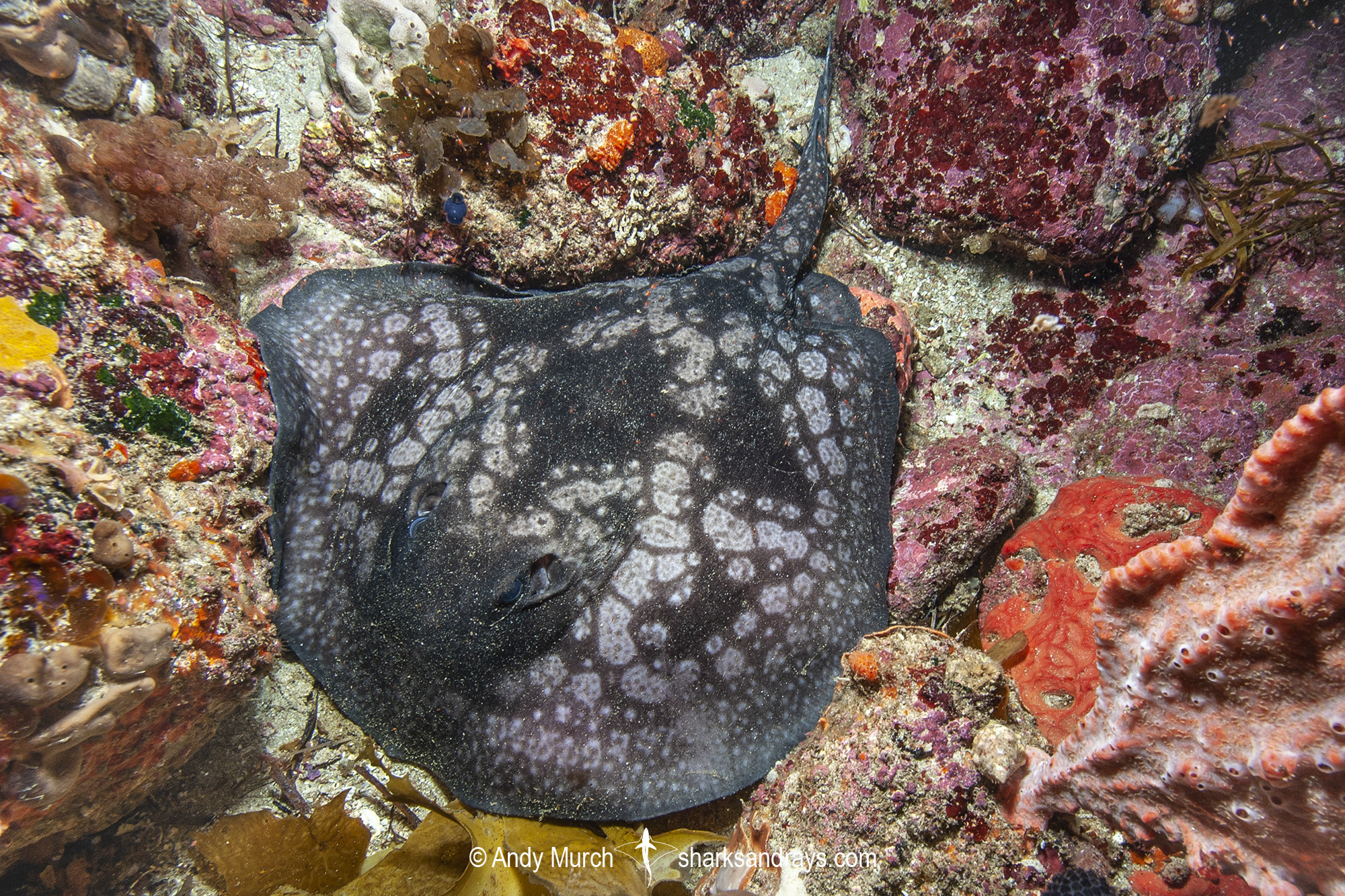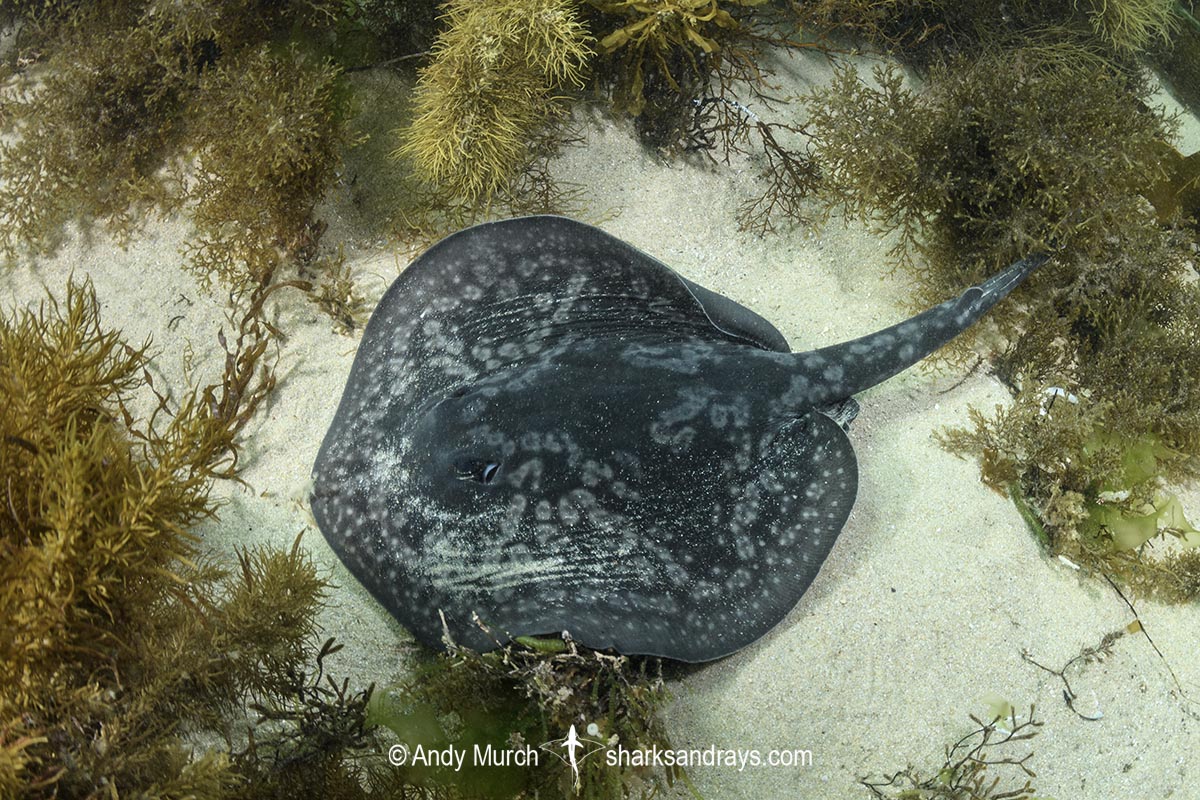Common name(s)
Spotted Stingaree.
Identification
A large stingaree with a circular disc that is approximately equal in length and width. Snout broadly rounded or slightly obtusely angular. Anterior margins of disc broadly convex, apices broadly rounded. Disc completely smooth.
Eyes very small; orbit length 0.16-0.25 x snout length. Spiracle large, origin below mid-eye or posterior portion of eye. Gill slit margins smooth. Mouth small. 9-12 small oral papillae on mouth floor. Nasal curtain skirt shaped, weakly flared posteriorly, slightly extended posteriorly into a lobe, posterior margin heavily fringed. No fleshy lobe on each nostril.
Tail short and broad, length 0.76-0.8 x disc length, round to somewhat oval in cross section. Dorsal fin present. Caudal fin short and deep, with a rounded tip.
Colour
Dorsum dark grey or blackish with a generally symmetrical, dense covering of irregular pale blotches containing small dark flecks. Where blotches are absent there is a dark mask across the eyes, a large dark circle on disc centre (without a white centre blotch), and a large dark vaguely triangular shape on posterior half of each pectoral fin. Pale blotches near disc margin and dorsally on tail smaller. Ventrum pale with scattered dark spots and a well defined dark disc margin.
Size
Total length 80cm. Length at birth unknown.
Habitat
Temperate seas. Found on and around rocky reefs, seagrass beds, kelp, and sand. From shallow water to 50m.
Distribution
Southeast Indian Ocean. The spotted stingaree is wide ranging in southern Australia, occurring from Lakes Entrance, Victoria westwards to Albany, Western Australia, including the northern coast of Tasmania.

Conservation Status
LEAST CONCERN
The Spotted Stingaree is a discarded bycatch in trawl and other ground fisheries in the Great Australian Bight and the Bass Strait, but fishing pressure in these areas is limited. Also this species preference for rocky habitats, probably offers further protection from fishing.

Reproduction
Viviparous, probably with trophodermic nutrition. Up to 13 pups per litter.
Diet
Diet unrecorded.
Behavior
The spotted stingaree hides in reef crevices, under ledges, and in seaweeds to avoid detection. Little else is known of its behavior.
Reaction to divers
Easy to approach. Generally remains motionless unless closely disturbed.
Diving logistics
The spotted stingaree is seen infrequently at numerous dive sites in the Great Australian Bight.
I encountered this species in Albany, WA, but this is at the extreme western edge of the species known range so they may be more common further south and east.
Searching under ledges and seaweed, and examining reef crevices while diving in mixed terrain is probably the best approach.
What’s new
View our full list of updates
Similar species
Circular Stingaree Distinguished in the field by subtle differences in dorsal patterning; most notably the central dark circle on mid back that is ringed in pale blotches and has a pale blotch in its centre.




